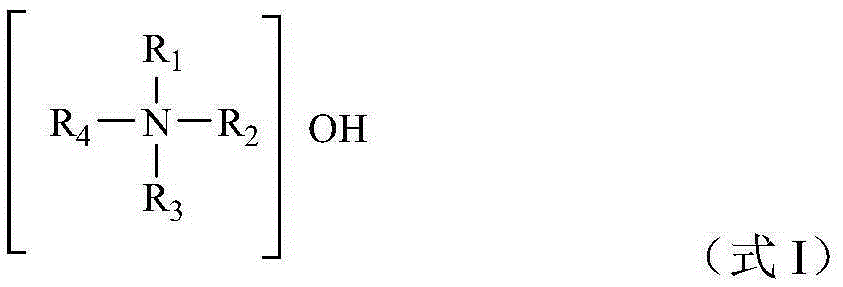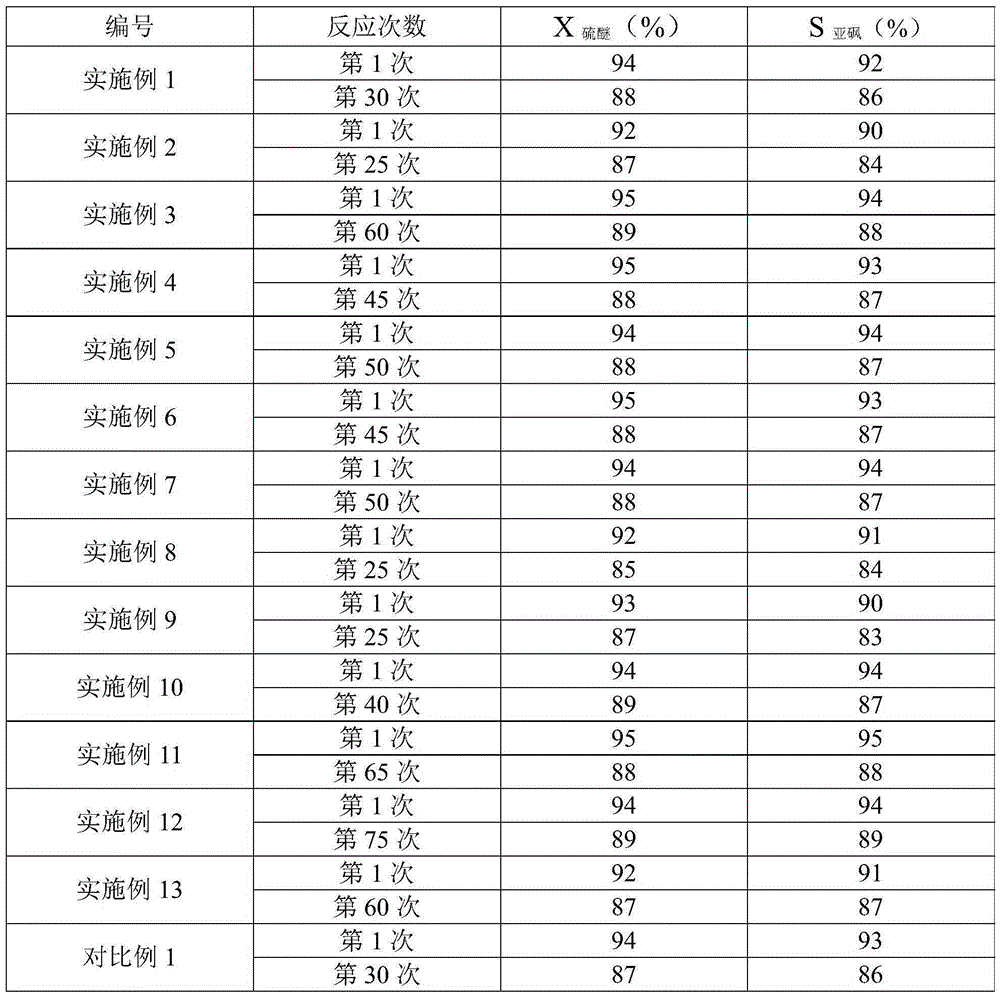Thioether oxidation method
A technology of sulfide oxidation and ethylbenzene hydrogen peroxide, applied in chemical instruments and methods, organic chemistry, preparation of organic compounds, etc., can solve the problem that the anodic oxidation method is not suitable for large-scale implementation, reduces the effective processing capacity of the device, and pollutes the environment to achieve high selectivity of the target oxidation product, increase the effective processing capacity of the device, and simplify the process flow
- Summary
- Abstract
- Description
- Claims
- Application Information
AI Technical Summary
Problems solved by technology
Method used
Image
Examples
Embodiment 1
[0094] (1-1) Ethylbenzene and oxygen are contacted and reacted at a temperature of 120° C. and a pressure of 1 MPa to obtain a reaction mixture containing ethylbenzene hydroperoxide. The composition of the reaction mixture is analyzed by gas chromatography to determine the ethylbenzene The content of benzene hydroperoxide was 15% by weight. Wherein, the molar ratio of ethylbenzene to oxygen is 1:2; oxygen is provided in the form of oxygen-containing gas, and in the oxygen-containing gas, the content of oxygen is 21% by volume, and the content of nitrogen is 79% by volume.
[0095] (1-2) The reaction mixture obtained in step (1-1) is mixed with hydrochloric acid (HCl concentration is 36.5% by weight) in an autoclave, wherein the ethylbenzene peroxidation in the reaction mixture obtained in step (1-1) The molar ratio of hydrogen to HCl was 1:0.005, the temperature in the autoclave was controlled to 40° C., the pressure in the autoclave was controlled to normal pressure (ie, 1 st...
Embodiment 2
[0100] Dimethyl sulfide was oxidized in the same manner as in Example 1, except that step (1-2) was not carried out, and the reaction mixture obtained in step (1-1) was directly sent to step (2). Table 1 lists the reaction results of titanium silicate molecular sieve TS-1 when it was used for the first time and the 25th time.
Embodiment 3
[0102] Dimethyl sulfide was oxidized by the same method as in Example 1, except that in step (2), titanium-silicon molecular sieve TS-1 was prepared by the following method.
[0103] Dissolve tetrabutyl titanate in the alkali source template agent tetrapropyl ammonium hydroxide aqueous solution first, then add silica gel (purchased from Qingdao Silica Gel Factory) to obtain a dispersion. In the dispersion, silicon source: titanium source: alkali source Template agent: water molar ratio is 100:4:12:400, silicon source is SiO 2 In terms of titanium source as TiO 2 In terms of alkali source template agent in N. Seal the above dispersion in the beaker with a parafilm and let it stand at room temperature (25°C, the same below) for 24h, then stir it at 35°C for 2h with magnetic stirring to re-disperse it. Transfer the re-dispersed dispersion liquid to a sealed reaction kettle, undergo the first stage of crystallization at 140°C for 6h, then cool the mixture down to 30°C and experi...
PUM
| Property | Measurement | Unit |
|---|---|---|
| length | aaaaa | aaaaa |
| adsorption capacity | aaaaa | aaaaa |
Abstract
Description
Claims
Application Information
 Login to View More
Login to View More - R&D
- Intellectual Property
- Life Sciences
- Materials
- Tech Scout
- Unparalleled Data Quality
- Higher Quality Content
- 60% Fewer Hallucinations
Browse by: Latest US Patents, China's latest patents, Technical Efficacy Thesaurus, Application Domain, Technology Topic, Popular Technical Reports.
© 2025 PatSnap. All rights reserved.Legal|Privacy policy|Modern Slavery Act Transparency Statement|Sitemap|About US| Contact US: help@patsnap.com



